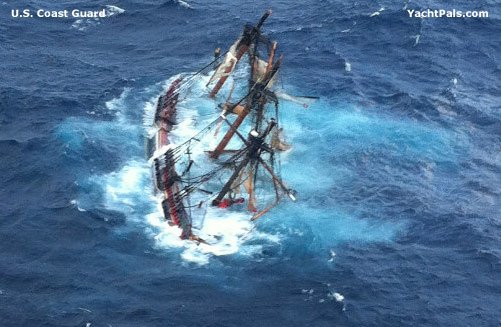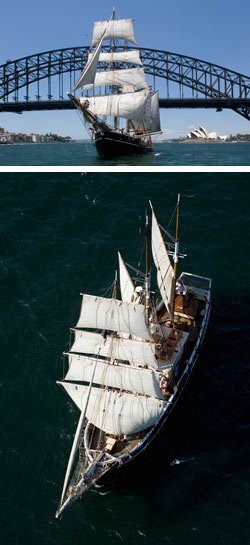Oh, one other thing for our Australian cohorts. About four or five years ago I directed a video project about RNP (a GPS-based navigation system for aircraft). One of the airlines we visited and shot with was Qantas. In Sydney we stayed at a hotel in The Rocks right under the Sydney harbor bridge. At that time there was a black-hulled square-rigger moored along the waterfront near the hotel which I believe was a replica of the Bounty. This same ship had been there a few years earlier when we were there for a project with what was then called Virgin Blue.
Is this the same vessel we're talking about here?
I think there are 2 fully rigged ships in the Sydney Heritage Fleet.
One is the timber replica of The Endeavour used by Captain Cook to "discover" Australia.I think it was built in Perth WA,for the Australian Bi Centenary in 1988, others may remember more. The hull has all the elegance of a brick with the corners ground off. We inspected it recently,it appears heavily and faithfully built, though it has an "iron topsail" (big diesel). I`m struggling here,but don`t think the hull is black. It has successfully experienced some weather and I don`t believe it has any "movie prop" provenance.
The other is the 1874 barque James Craig, its iron (except for some steel plate replacements) hull, painted black, looks like a racing greyhound of the seas, a most elegant vessel. It was found as a rusting sunken hulk in Tasmania,our most southern and island state, brought to Sydney and fully restored over many years. It was closed for inspection the day we saw Endeavour at the Wooden Boat Show.
Both vessels are in regular use. I have read reports of longer voyages of Endeavour. Photos of the James Craig in full sail are impressive.Both are usually in Darling Harbour which is a little further from the Rocks hotel area.
There is one other ship, the much smaller Sydney Swan (ex Svanen) which arrived from Scandinavia 20 plus years back, stayed and does day cruises.It is kept more in the area you identify.The Endeavour may have been there at one time too.
Marin,I think you saw the James Craig.You could try searching the vessel names.
Anyone else able to help? BruceK


